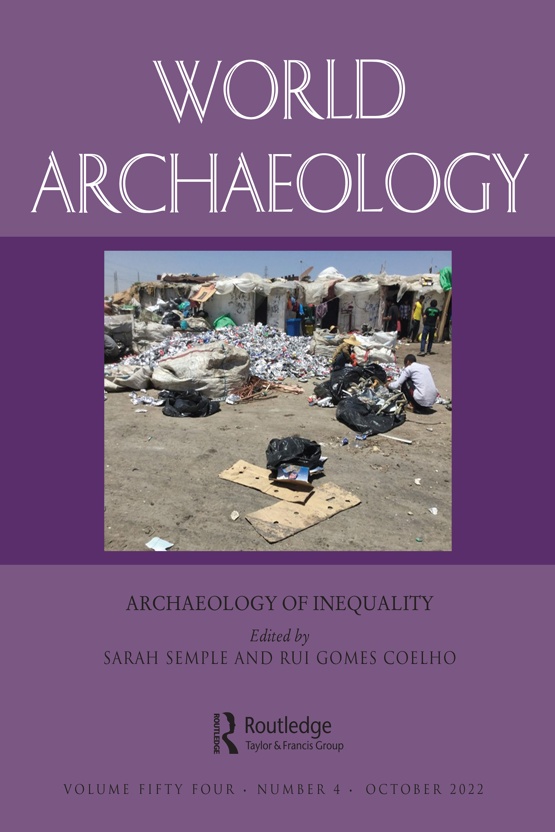Submit a Manuscript to the Journal
World Archaeology
For a Special Issue on
Crime and Punishment
Manuscript deadline
20 May 2024

Special Issue Editor(s)
Alfredo Gonzalez-Ruibal,
Institute of Heritage Studies of the Spanish National Research Council
[email protected]
Paul Lane,
University of Cambridge
[email protected]
Crime and Punishment
Concepts and practices of crime and the ways in which they are punished can tell us a lot about a society. Not surprisingly, such matters have been the object of scrutiny by legal and cultural historians as well as anthropologists. In archaeology, it has been historical archaeology that has shown greatest interest in the topic, probably because both crime and punishment are easier to explore through comparison with the documentary record and their material traces are more evident – from prisons to courthouses. Punishment also acquired particular relevance and a peculiar character in modern societies, from the eighteenth century onwards, with a stronger emphasis on punishing (and reforming) the soul, instead of the body, new institutions were born, such as prisons, reformatories, penal labour, etc., which can be studied from archaeological as well as historical perspectives. In recent years, attention has been paid to the archaeology of political repression, including mass killings and internment camps, a kind of archaeology that has seldom engaged with other archaeologies of crime and punishment.
Yet diverse forms of punishment have been explored for earlier periods as well. There is an important body of archaeological literature on torture, capital punishment and postmortem treatment of criminal bodies and their performative role . For societies for which written records are absent or scarce it is not always easy to distinguish between punishment, ritual and sacrifice. This may be due to the ambiguities of the material evidence, but may also be because of different ontologies and categorisations of ‘crime’. Archaeological evidence for non-capital punishment in early states also exists in various contexts, including China, where forced labour has been inferred from burials recovered from penal cemeteries and Imperial Rome, among others. Traces of crimes are more difficult to identify than punishment in the archaeological record, but examples exist from Tang China to seventeenth-century Western Australia, often concerning illicit activities such as smuggling and distilling.
For this special issue we invite and encourage papers that explore new questions related to this topic, such as the relationship between punishment and memory, pedagogies of terror, performance, punishment and sovereignty in early states, gender-based violence and gendered punishments, methodologies to detect crimes in the past (including archaeometric analyses), the treatment of young offenders and individuals with impaired mental health, carceral systems in colonial or other settings, evidence for ‘illicit’ activities. Owing to limitations on space, while recognizing the importance of defining and responding to heritage crime in the present, the editors consider submissions on such matters as beyond the scope of this particular issue.
Looking to Publish your Research?
Find out how to publish your research open access with Taylor & Francis Group.
Choose open accessSubmission Instructions
Please refer to the author guidance using the link below before submitting an article.